Parent Category:
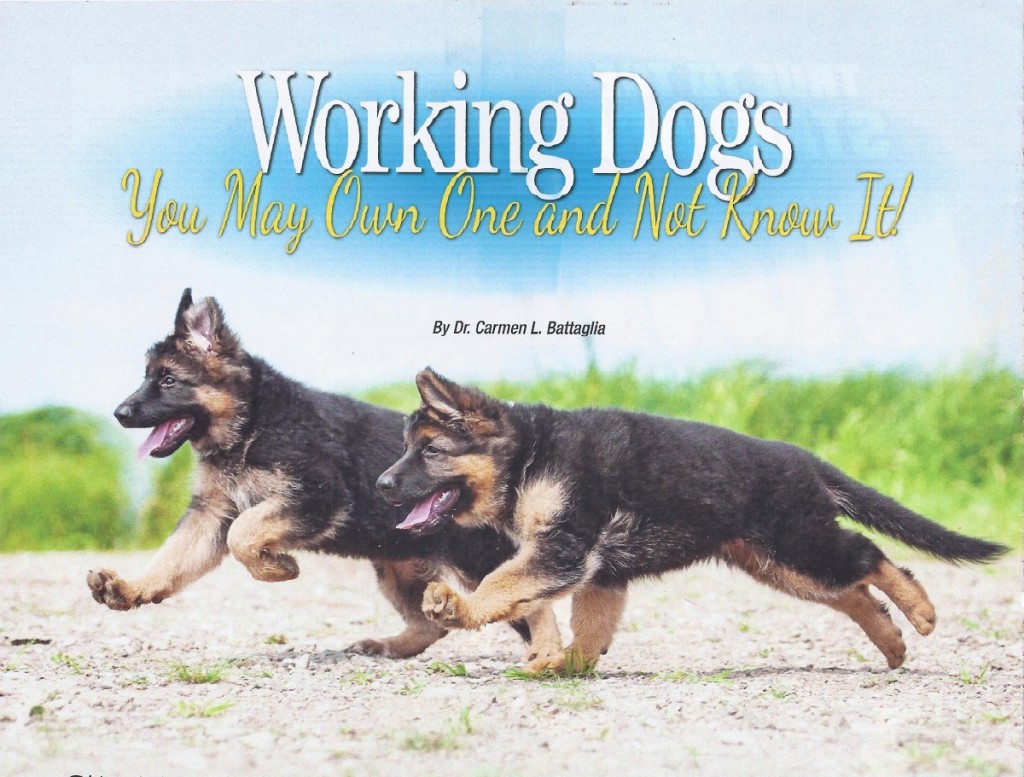
Since the beginning of domestication, humans have inten tionally and unintentionally modified the purpose, function, structure and behavior of dogs, resulting in the development of more than 400 breeds. Ownership has spread across the globe. In the UK, 31 % of human households own a dog. In the US and Australia, 36% own dogs, and in Japan it is more than 19%. In such diverse environments it is not surprising that many breeds have been developed to serve a variety of specialized and unique roles. Breed functions have been extended from that of a hunter, partner and companion to a protector and detector. Their roles within each of these functions have also included a wide range of behaviors and phenotypes. Many of today's canines have become superior athletes, sound in temperament and skilled at many tasks. This group of unique specimens have been labeled "working dogs". The term defines a behavior and skill based on their special uses which often exceed that of equipment used on airport screening. Their work environment includes war and peace time, and in many ways these dogs are better equipped than humans. What makes them so unique is their portability, loyalty and trustworthiness. This paper addresses the need for working dogs and why they are being used to support a national interest.
National Shortage
In modem societies, dogs have become one of the primary tools used to support national security. Unfortunately, here in the United States they are in very short supply because for more than 30 years our country has relied on breeders in Europe to supply our needs. Since 911 the need for dogs has steadily increased because terrorism has continued to exploit the vulnerabilities of countries. Recent attacks in Paris and at the Brussels Zaventem and Istanbul Ataturk airports demonstrate that aviation systems remain their primary targets. The terrorists have also demonstrated their capabilities to become more sophisticated as they seek to circumvent our technology systems. This has made the canine's nose one of our best lines of defense. Their contributions to national security along our borders, at ports of entry, in our airports and beyond continue to grow. In fiscal year 2016, TSA canine teams screened approximately 26 million passengers and responded to requests to check 35,000 unattended items. In response to threats of terrorists, the US Department of Homeland Security (DHS) maintains a robust canine program with teams ranging from patrol units with the US Secret Service and explosive detection units with the Coast Guard and TSA, to Urban Search and Rescue units with FEMA. The US Customs and Border Patrol has approximately 1,500 canine teams which is considered by many to be the largest canine program at DHS with many missions that include tactical operations for the detection of narcotics, firearms, undeclared currency, concealed persons and the illegal, undeclared agricultural products which have the potential to wreak havoc on U.S. agricultural resources. The breeding and training of these special canines have produced two categories of working dogs. The largest group are called "detection" dogs. They are used to find and locate bombs, firearms, illegal drugs, cell phones, etc. The second group are called "Patrol dogs". They are bred and trained to find things and also to carry out police and military assignments. According to TSA and DOD officials, "much of the regular supply of these valuable dogs has been sucked up by the European countries because of the spread of terrorism occurring in their own countries". While not apparent to the public, many of our best canines are used to support the Secret Service who protect the President, Vice President, political dignitaries, foreign heads of state and our highly visible and wellknown spectator events. Most of our working dogs go unnoticed because they are used behind the scenes at large events where they screen and secure facilities before the event begins or other places that accept and handle cargo at our borders and ports of entry.
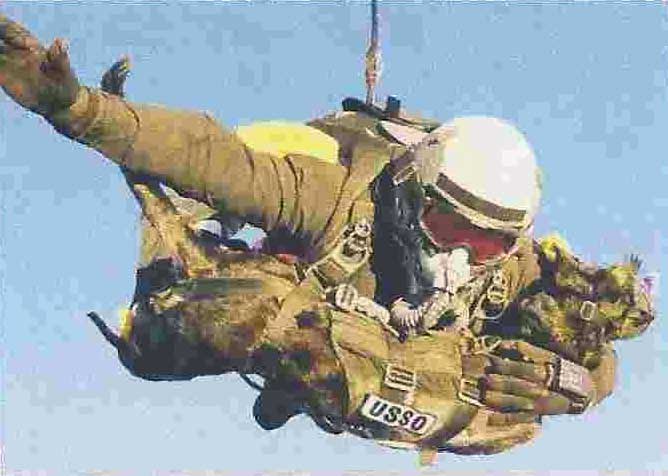
The obvious advantage to using purpose bred dogs is that unlike equipment which need to be recalibrated when moved to new locations or after changes in temperature or humidity, dogs are ready immediately. Regardless of their work environment, canines remain alert and ready to respond. In the US, there are more than three million purebred dogs, but only a fraction of the dog population works for Federal, State or local government agencies. The exact number of dogs and breeds used to support the national interest is not reported, and the US government does not release statistics about their locations. The seven operational units mentioned earlier, plus our 184 American military bases worldwide, suggest that our needs are very large.
Estimates from reliable sources indicate that between ten and thirteen breeds are used by our government. The most popular breeds include the: German Shepherd Dog, Belgian Malinois and Dutch Shepherd, Beagle, Jack Russell Terrier, Labrador Retriever, Vizsla, Golden Retriever, Flat Coated Retriever and German Shorthaired Pointer. When you see dogs of different breeds in the airport, at a mall, in crowded streets or at large events, some are likely to be patrol dogs, others will be detection dogs. Other breeds also are given special jobs. For example, the Newfoundland, with its size and intelligence, is well suited for the rescue of drowning people and swimmers who need help getting to shore. The Jack Russell Terrier has also become an eco-agent in Guam that is used to control termites and imported tree snakes. For a breed that was originally developed to hunt badgers and foxes, it has become vital in the fight to protect native ecosystems.
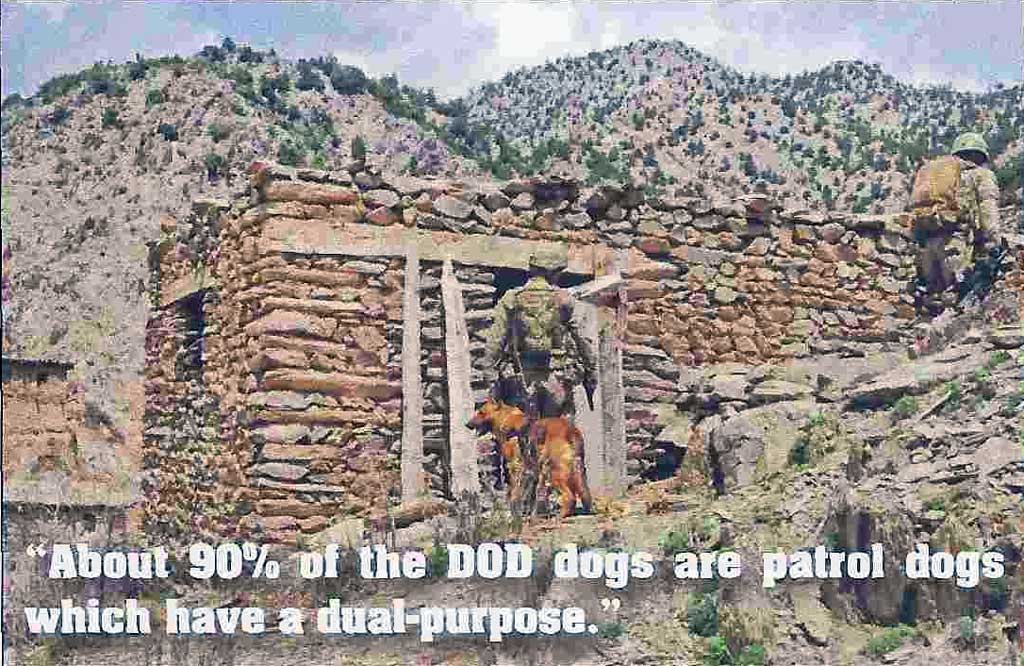
The breeding and training of dogs for special purposes is a not new concept. The idea dates back to the ancient Greeks and Ro mans who kept dogs to protect their cities and to warn of advancing enemies. Mastiffs were used by the Roman legions in their march across the known world. By the 20th century most European armies were using dogs during war and peace time. Boxers became the first breed to be used by the police. In World War I they were used as messengers for the Red Cross. In 1942, Secretary Henry Stimson ordered all branches of the US military to investigate the feasibility of using dogs for military service and within a few months they were being enlisted and used as sen tries, scouts and couriers. By the end of World War II, their use had been expanded to include the detection of drugs, weapons and mines. During and after World War II, canines were used to locate illegal drugs and contraband. Today they are also used to find hidden cell phones which now have become the popular method for remotely detonating bombs.
Stories about their heroics are also legendary. In 1943, an Army German Shepherd Dog named "Chips" attacked an enemy pillbox in Sicily and took four startled solders by surprise. In the memoirs of Lt. Col. James Y. Baldwin, he refers to the miraculous work of rescue dogs during the bombardment of London. In Vietnam, working dogs were used to save countless lives because of their abilities to sense and detect air passing over hair thin trip wires and booby traps in the jungle and to smell out guerillas hidden deep in underground tunnels. FEMA, TSA, DHS, Customs, Border Patrol and other agencies rely on a variety of the breeds to meet their missions. According to Lt. Col. John Probst, commander, 341" Training Squadron, Lackland Air Force Base (AFB), San Antonio, Texas, "about 90% of the DOD dogs are patrol dogs which have a dual-purpose".
This means they can detect and carry out the tough work needed by the police and military. Many are used in Iraq and Afghanistan to search caves and bunkers for the enemy. TSA and other agencies need single purpose dogs to find explosives, drugs and other dangerous items. According to Lt. Col. Probst, the Navy relies on the Beagle and Jack Russell Terrier when ships are boarded at sea. These breeds can get into tight places and require less living space on ships.
Many research institutions have also become involved. They include: U. of Penn Working Dog Center, John Hopkins, U. of Toronto, NC State, Auburn and Florida State University to mention just a few. Scientists are studying how dogs detect cancer and other diseases in humans. Researchers at Auburn University are studying how dogs can be trained to remember up to 40 odors. Many of these efforts are focusing on canine behavior, training methods and the olfactory system. With more than 300 million receptors, as opposed to humans which have three million, medical experts believe that dogs are able to detect changes in human brain chemistry.
With the rise in terrorism worldwide, the demand for both patrol and detection dogs has steadily increased. Some agencies have been forced to use shelter dogs. Others have attempted to develop their own breeding programs. Neither approach has been successful. The Unites States government established four breeding programs only to close all four and demonstrate their inability to maintain a government owned breeding program. The most recent government breeding program to be shut down occurred in 2012 when the TSA breeding program was closed due to a budget cut. The unintended consequence of terminating a science based breeding program did not go unnoticed. TSA had demonstrated that by collaborating with the private sector, they could successfully produce high quality healthy, purpose bred working dogs. The high standards set by TSA initially produced a high rejection rate which some estimate to have been in the range of 30-50%. The most common reason for rejection was lack of soundness in their hips, elbows and temperament. Over time, using pedigree analysis, performance measures and careful selection, TSA was able to overcome most of these problems.
In 2016, the US Senate held two hearings that focused on the need for working dogs and the problems related to our national security. These hearings uncovered some of the road blocks hindering the development of a domestic breeding program. The first was the government regulation that required breeders to become an authorized vendor in order to sell or donate dogs to the government. The second was the lack of an organized effort to help breeders interested in meeting this need. The regulatory requirements used by TSA and DOD were designed primarily for large corporations like Boeing with multimillion dollar portfolios and hundreds of employees. Small breeders with kennels are not equipped to meet these legal and regulatory requirements and the paperwork is overwhelming without the use of attorneys who can manage the red tape. After her testimony to the Senate in 2016, Dr. Cindy Otto, Director of the U. Penn Working Dog Center, suggested I ask the American Kennel Club if it might become a co-op vendor which would then allow AKC reeders to become members of the co-op. The Board agreed that AKC should help. With board approval and a small team made up of AKC board members and staff, we began the process of visiting several organizations who were breeding or training these special working dogs. We started with the University of Pennsylvania Working Dog Center, then the TSA, military and contracting offices at Lackland Air Force Base, Texas. Other sites visited included Auburn University Vet School, government vendors, several breed clubs, breeders and kennel owners. Fact gathering and planning continues as this article is being written. The good news is there are many interested in supporting a national breeding program and a puppy raising program which I have called the "Patriotic Puppy" project.
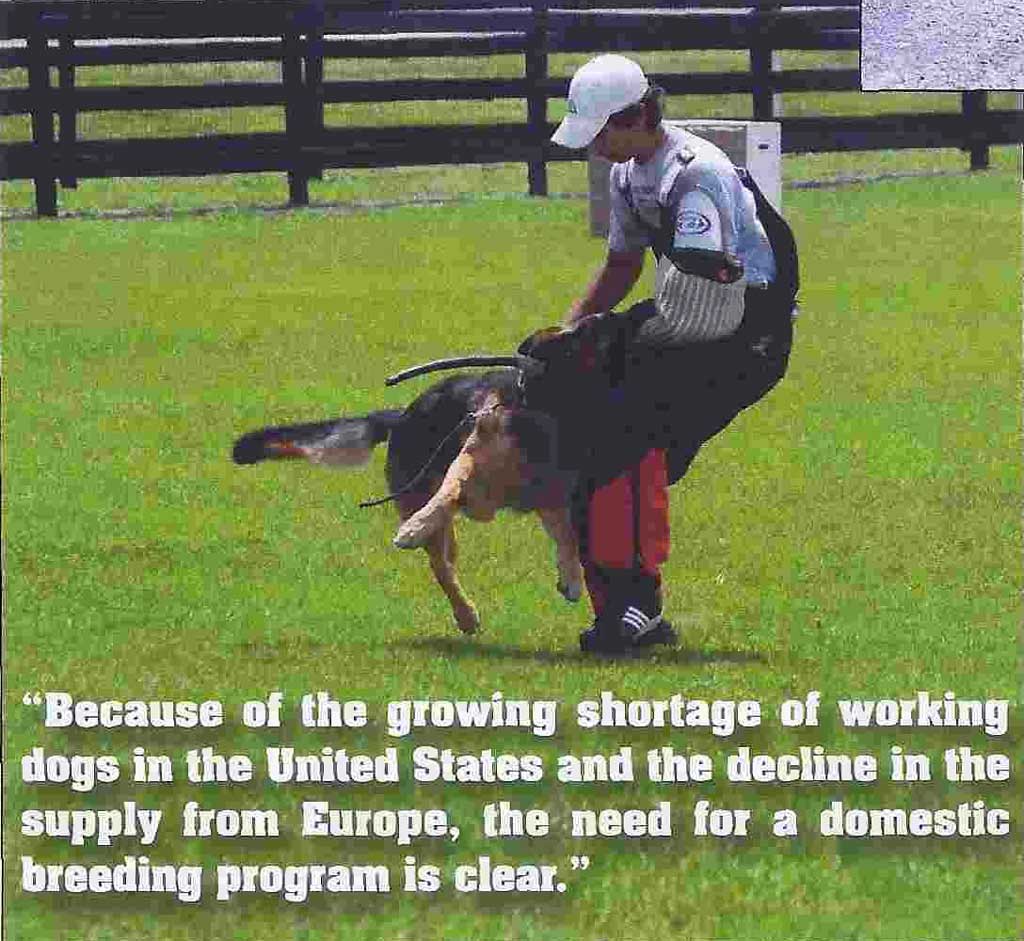
Because of the growing shortage of working dogs in the United States and the decline in the supply from Europe, the need for a domestic breeding program is clear. This led AKC to assemble a team of stakeholders which included representatives from the government, universities and private sector. Our purpose was to develop a strategy that focused on a national breeding program that could produce single and dual-purpose working dogs (Detection-Patrol). The first AKC Canine Detection Working Dog conference was held in Durham, North Carolina on February 28 and March 1, 2017. The stakeholders included some of the best experts from government and the private sector whose interests, professions and diverse back grounds could contribute to the many and varied aspects of canine breeding, behavior and genetics. Our purpose was to develop a better plan for the delivery of more dogs that are suitable for use in the defense and protection of the United States. The common denominator for those in attendance was their shared vision and national interest. The consensus was that such a program would take 1-2 years given the time needed to organize breeders coupled with a mentoring and support program provided by AKC and the stakeholders.
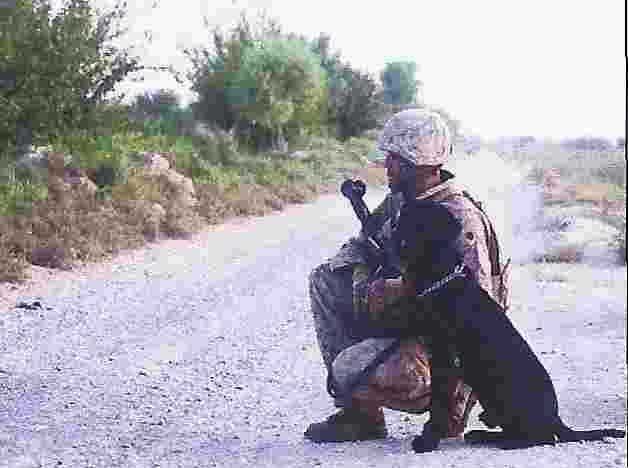
Scott Thomas of TSA and others were instrumental in developing this process. Lt. Colonel Mathew Enroth, Chief of Veterinary Diagnostics at Lackland Air Force Base, discussed the screening and evaluation of dogs and the primary reasons for failure. He pointed out that many of the best working dogs are also good athletes with stamina who are not easily distracted. The criteria for selection depends on each agency and their specific needs.
Breeders interested in this program are now using vertical and horizontal pedigrees and other protocols such as formula breeding methods. Temperament tests and puppy training techniques are other key elements. For example, teaching young dogs to be muzzled, kenneled and crated are part of the readiness test. The socialization program includes varied situations such as walking on multiple kinds of textures and surfaces, and exposure to sudden sounds and moving objects. The program also includes a steady diet of trips to populated places like Home Depot, PetSmart, dog parks, playgrounds, local schools and places where pups can be exposed to a wide range of smells, noises, abrupt movements and distractions. For some dogs, a degree of aggression and barking can be useful. For those with protective instincts, they must be taught to obey. Other identifiable characteristics include the willingness to play (chase and fetch-prey drive), stamina and strength. These early socialization and enrichment experiences are part of a puppy's training. The breeders and puppy raisers are taught ways to shape and develop a working dog character. The standards are high, and those who make it generally have a working life averaging seven to nine years.
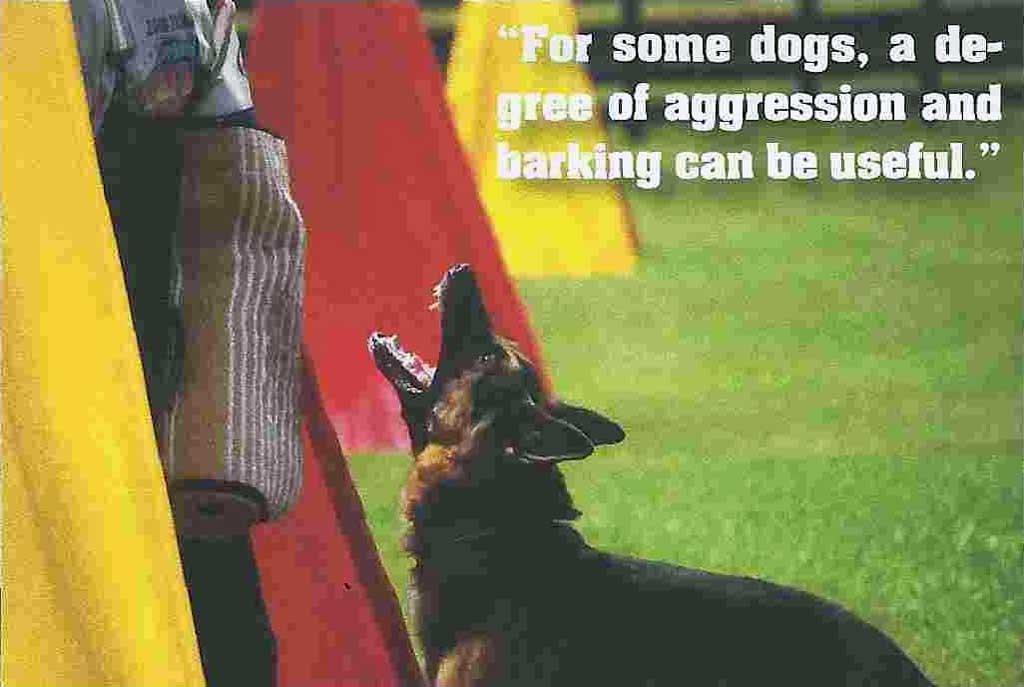
Handler training requires several weeks of formal training. Those selected learn how to manage and care for these special canines. Handlers quickly learn that their dog will become their best friend. Handlers often brag that "if the situation requires a life-threatening response" their dog will not fail. During the Vietnam War, a German Shepherd Dog named "Nemo" working for the Air Force didn't hesitate to attack four Viet Cong fighters to protect his handler. Nemo lost an eye, but miraculously both he and his handler survived the attack.
Retirement
Until the late 1990s, the DOD did not place retired military working dogs with civilians primarily because of certain liability issues. That law was known as the Robby Law, after a military working dog at Quantico Combat Development Command, Virginia. Today, dogs that are too old for work and not needed for the training of younger dogs or handlers are made available for adoption. First on the list of adoptees are law enforcement agencies, then previous handlers, and lastly civilians deemed capable of humanely caring for them.
Future Candidates
Experts believe that many Americans already own potential working dog candidates. Many of the potential candidates for this program can be found throughout the AKC dog sport in the obedience ring, and at herding, tracking, rally, agility and working dog trials. In 2016 over 1,500 AKC events attracted more than two million entries. Experts believe that within this large audience there are many owners and breeders willing to commit the time and effort needed to help the country. Those who become in volved will be provided information and assistance. More information will be made available about the dog detection breeding program in the weeks ahead.
References:
- Battaglia, Carmen. 2017. "Detection Conference", AKC Perspectives, New York, New York, June issue.
- Battaglia, Carmen. 2010. "Pedigree Analysis", Canine Chronicle, Ocala, Florida, April issue.
- Battaglia, Carmen. 2011. "Formula Breeding", Canine Chronicle, Ocala, Florida, July Issue.
- Hayes, Geraldine. 2002. "In His Majesty's Service", AKC Gazette, New York New York, Vol. 118, No.9, Sept., p. 100.
- MacDonald, Dorothy. 2002. "World Class Workers", "In His Majesty's Service", AKC Gazette, New York, New York, Vol. 118, No.9, Sept. p. 37-41.
- Perry, Scott (R-PA) 2017. "Oversight and Management Efficiency" Subcommittee, "From the Border to Disasters and Boone: Critical Caine Contributions to the DHS Mission". (May 18, 2017).
- Vaughan, Don. 2002. "Steadfast Sentinels", The Retired Officer Magazine, Alexandria, Virginia, May, p. 73-75.
About the Author
Carmen L Battaglia holds a Ph.D. and Masters Degree from Florida State University. As an AKC judge, researcher and writer, he has been a leader in promotion of breeding better dogs and has written many articles and several books.Dr. Battaglia is also a popular TV and radio talk show speaker. His seminars on breeding dogs, selecting sires and choosing puppies have been well received by the breed clubs all over the country.

